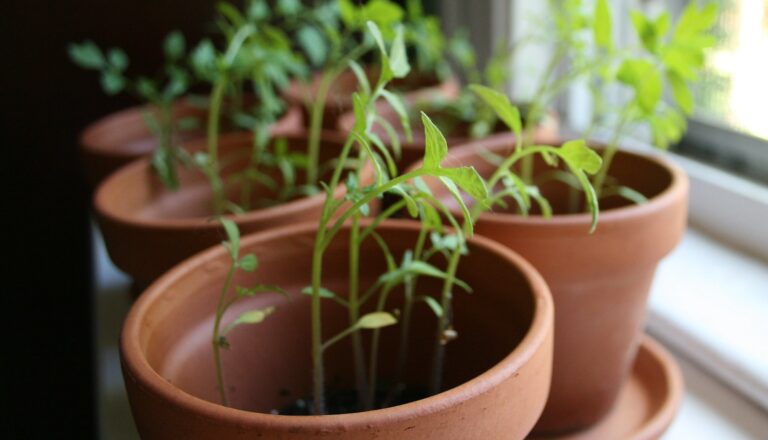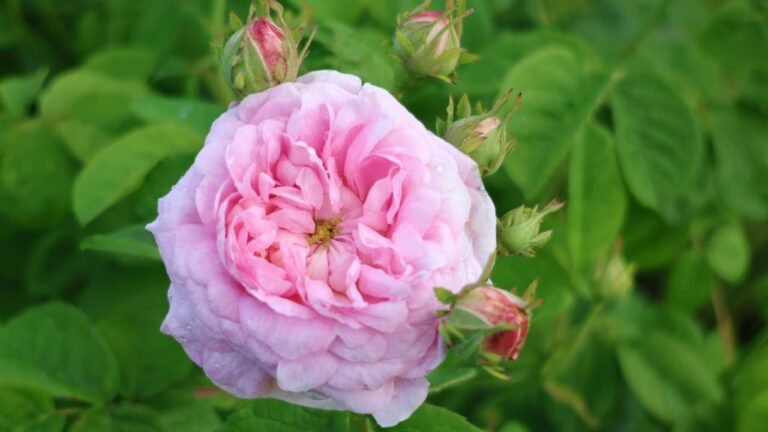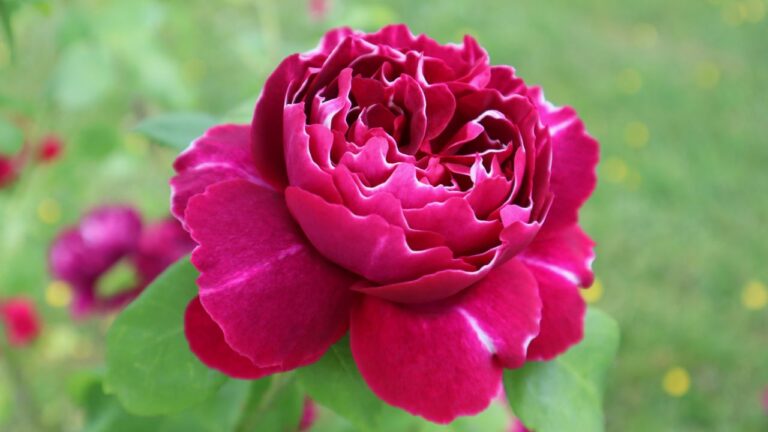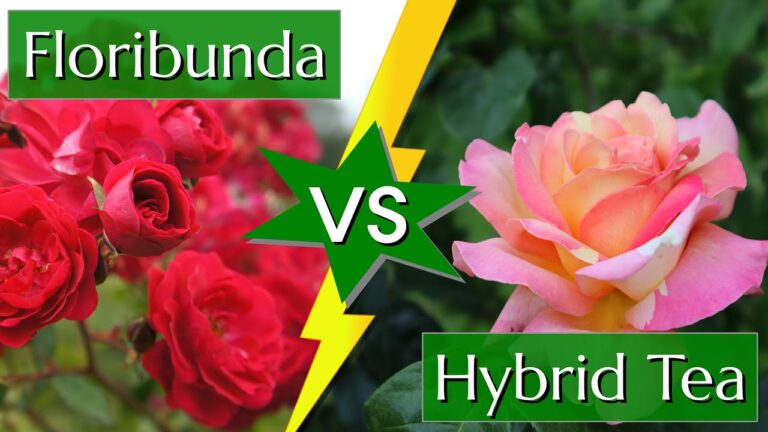Few roses are as steeped in history and symbolism as Rosa alba. Known for their grace, subtle beauty, and enduring garden value, these historic white roses have captivated gardeners for centuries. In this article, we’ll explore the fascinating story of Rosa alba, its influence on modern gardens, and the allure of white roses as symbols of peace, purity, and love.
The Original White Rose: Rosa Alba Semi-Plena
Often referred to as the “White Rose of York,” Rosa alba semi-plena is believed to be one of the oldest cultivated white roses. This elegant variety, with its semi-double blooms and delicate fragrance, holds a storied place in history. Roman historians, such as Pliny the Elder, described white roses in their writings, likely referencing early forms of Rosa alba. Centuries later, the Wars of the Roses in 15th-century England immortalized the Rosa alba as the emblem of the House of York, cementing its association with peace and loyalty.
Botanically, Rosa alba semi-plena is a hybrid of Rosa gallica and Rosa canina. Its pale green leaves, soft white blooms, and reliable hardiness made it a favorite in early European gardens. This rose thrives in a range of conditions, tolerating poor soil and shade better than many of its modern counterparts. Gardeners today value it for its simplicity and historic charm. More on the history of Rosa alba in this video:
The Evolution of White Roses in Gardens
The lineage of Rosa alba extends into many beloved varieties that continue to grace modern gardens. Following the popularity of Rosa alba semi-plena, hybridizers developed other notable albas, such as:
- ‘Maxima’ – Often called the “Great White Rose,” this variety is larger and more robust than its semi-plena counterpart, with fully double, creamy-white flowers.
- ‘Maiden’s Blush’ – Technically a blush-pink alba, this rose often fades to near-white and remains a classic choice for cottage gardens.
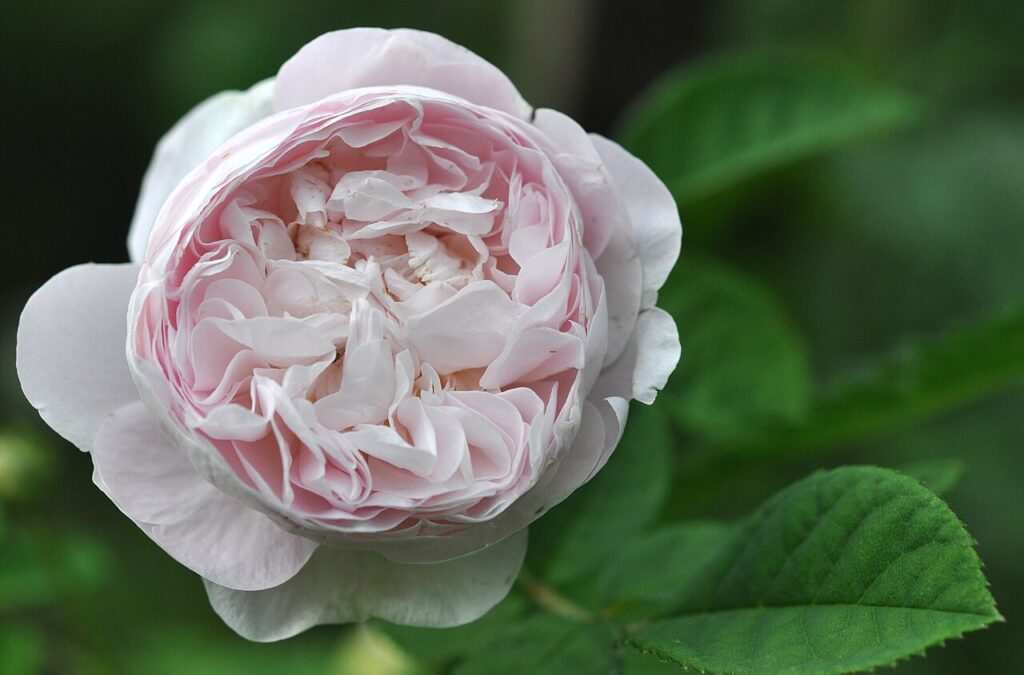
- ‘Félicité Parmentier’ – A charming alba with compact growth, pale pink blooms that fade to white, and a delightful fragrance.
- ‘Madame Plantier’ – Known for its fully double white flowers and graceful arching habit, this rose is often used as a climber in gardens.
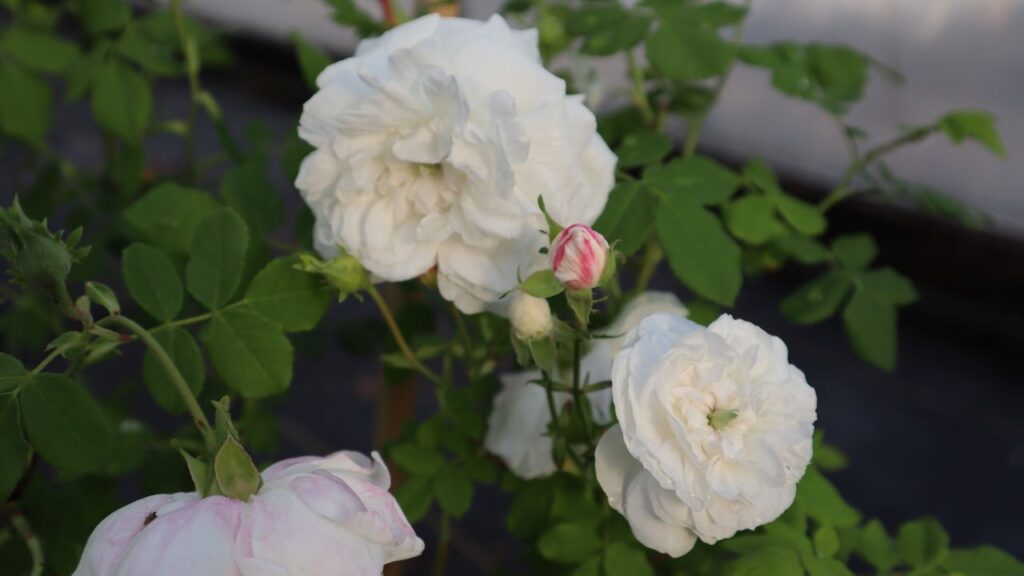
The alba’s reputation for disease resistance and hardiness has influenced countless modern roses. Hybrid teas, floribundas, and even climbers have inherited its refined beauty and durability.
White Roses in Symbolism and Culture
White roses have long been associated with themes of purity, innocence, and spirituality. Their symbolic ties to the Virgin Mary made them staples of medieval church gardens. In Victorian times, white roses conveyed messages of reverence and honor in the language of flowers.
This symbolism transcends cultures. In Persian poetry, white roses symbolize divine love, while in Japan, they represent loyalty and truth. In Arabic, the term ورد ابيض (ward abyad) evokes similar sentiments of purity and peace. The universality of white roses adds to their timeless appeal.
Cultivating Rosa alba and Its Descendants
For gardeners inspired by history and simplicity, Rosa alba varieties are an excellent choice. They thrive in:
- Cool to moderate climates: Albas perform well in zones 3-8, withstanding cold winters and hot summers when given adequate care.
- Partial shade: Unlike many roses, albas tolerate some shade, making them versatile for less sunny spots.
- Low-maintenance gardens: These roses are naturally resistant to diseases like blackspot and powdery mildew, requiring less intervention.
To grow Rosa alba, plant it in well-drained soil amended with compost. Minimal pruning is needed—just remove dead or weak wood in early spring. Albas prefer a more natural growth habit, which adds to their charm in informal gardens.
Looking Ahead: White Roses for Modern Gardens
The legacy of Rosa alba is alive in many modern white roses that combine historic beauty with contemporary breeding. Varieties like:
- ‘Winchester Cathedral’ (David Austin): A fragrant English rose with creamy white blooms.
- ‘Iceberg’: A prolific floribunda with clusters of crisp white flowers.
- ‘Polar Star’: A hybrid tea rose with elegant, high-centered blooms.
- ‘Pope John Paul II’: A stunning hybrid tea with luminous white blooms and a powerful citrus fragrance.
- ‘Memoire’: Known for its creamy white petals and reliable performance, this hybrid tea rose is a favorite in formal garden settings.
These roses bring the timeless elegance of Rosa alba into modern designs, offering gardeners an array of choices for borders, hedges, or stand-alone specimens.
Conclusion
Rosa alba and its descendants remind us that gardening is both an art and a bridge to history. By cultivating these historic white roses, we not only add beauty to our gardens but also connect with centuries of horticultural tradition. Whether you’re drawn to their symbolic meanings or simply their understated elegance, white roses remain a perennial favorite—rooted in the past yet blooming for the future.

